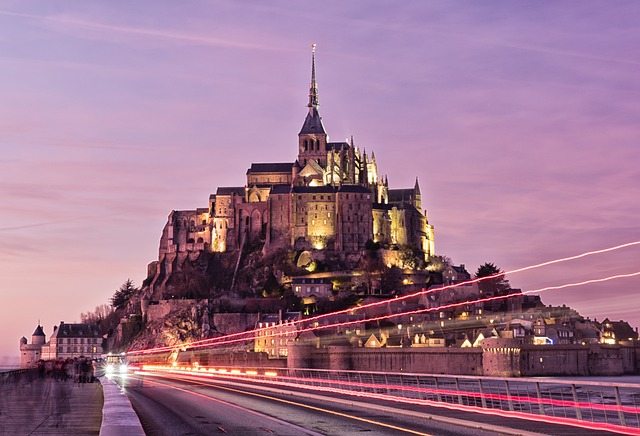Top Historical Sites in Belgium: A Journey Through Time

Belgium, a small yet culturally rich country nestled in the heart of Europe, is a treasure trove of history, art, and architecture. From medieval castles to UNESCO World Heritage Sites, Belgium offers an unforgettable journey through time. Whether you’re a history enthusiast, an architecture lover, or simply a curious traveler, this charming nation has something for everyone. In this article, we’ll explore the top historical sites in Belgium that you absolutely must visit.
1. The Grand Place (Brussels): A Masterpiece of Gothic Architecture
The Grand Place, or Grote Markt, in Brussels is one of the most iconic squares in Europe and a UNESCO World Heritage Site. This stunning plaza dates back to the 15th century and serves as a testament to Belgium’s rich medieval past. Surrounded by ornate guildhalls, the Town Hall, and the King’s House, the square is a feast for the eyes.
Every detail of the architecture tells a story, from the intricate carvings on the façades to the gilded statues adorning the buildings. During the annual Flower Carpet event, the square transforms into a vibrant tapestry of colors, drawing thousands of visitors from around the world. Don’t miss the chance to sip a cup of Belgian waffles or chocolate while soaking in the grandeur of this historic site.
2. Bruges: The Venice of the North
Often referred to as the “Venice of the North,” Bruges is a fairytale city frozen in time. Its cobblestone streets, picturesque canals, and medieval buildings make it one of the best-preserved cities in Europe. The Belfry of Bruges, a towering structure in the city center, offers panoramic views of the city and houses a carillon with 47 bells.
Another must-visit spot is the Basilica of the Holy Blood, which houses a venerated relic believed to contain Christ’s blood. As you wander through the Markt (main square) and Burg Square, you’ll feel like you’ve stepped straight into a medieval painting. Bruges is also famous for its lace-making tradition and delicious Belgian chocolates—perfect souvenirs to take home!
3. Ghent: A Blend of Medieval and Renaissance Splendor
Ghent, Belgium’s third-largest city, is often overshadowed by Bruges but is equally enchanting. The Gravensteen Castle, or “Castle of the Counts,” is a highlight of any visit to Ghent. Built in the 12th century, this fortress served as both a residence and a prison, and today it stands as a symbol of the city’s turbulent past.
The Saint Bavo Cathedral is another gem, housing the world-famous Ghent Altarpiece, also known as the “Adoration of the Mystic Lamb.” Painted by the Van Eyck brothers in the 15th century, this masterpiece is considered one of the greatest achievements of European art. For a more modern touch, head to the Graslei and Korenlei quays, where historic warehouses meet contemporary cafes and restaurants.
4. Antwerp: A City of Diamonds and Art
Antwerp, Belgium’s second-largest city, is renowned for its diamond trade, fashion scene, and artistic heritage. At its heart lies the Cathedral of Our Lady, a breathtaking example of Gothic architecture that took nearly two centuries to complete. Inside, you’ll find several masterpieces by Peter Paul Rubens, one of the most celebrated painters of the Baroque era.
No visit to Antwerp would be complete without exploring the Plantin-Moretus Museum, a UNESCO World Heritage Site dedicated to printing and typography. Housed in a 16th-century printing workshop, the museum showcases rare books, printing presses, and tools used during the Renaissance. History buffs will appreciate learning about how Antwerp became a hub of intellectual and cultural exchange during this period.
5. Waterloo Battlefield: Where Empires Collided
History enthusiasts will relish a trip to the Waterloo Battlefield, located just south of Brussels. It was here, in 1815, that Napoleon Bonaparte faced his final defeat at the hands of the Duke of Wellington and Prussian Field Marshal Blücher. The battlefield is now a sprawling memorial site featuring monuments, museums, and even a multimedia experience called the “Lion’s Mound.”
Climbing the Lion’s Mound provides not only a stunning view of the surrounding countryside but also a deeper understanding of the battle’s strategic layout. The nearby Memorial 1815 museum uses immersive exhibits to bring the events of that fateful day to life, making it an educational and emotional experience for visitors of all ages.
6. Dinant: A Picturesque Town Steeped in History
Nestled along the Meuse River, Dinant is a quaint town with a dramatic backdrop provided by the towering cliffs of the Ardennes. The Collegiate Church of Notre-Dame, perched atop these cliffs, dominates the skyline and is a marvel of Gothic architecture. Legend has it that Dinant is the birthplace of Adolphe Sax, the inventor of the saxophone, and you can learn more about his life at the Maison de Monsieur Sax.
For adventure seekers, a cable car ride offers breathtaking views of the river and surrounding landscape. Meanwhile, the Citadel of Dinant, accessible via a steep staircase or a funicular, provides insight into the town’s defensive history and offers panoramic vistas that are well worth the effort.
7. Tournai: A Cradle of Romanesque Art
Tournai, one of Belgium’s oldest cities, boasts a wealth of Romanesque and Gothic architecture. The Cathedral of Our Lady, a UNESCO World Heritage Site, is particularly noteworthy for its five towers and stunning interior. Inside, you’ll find frescoes, sculptures, and a magnificent rose window that reflect the evolution of religious art over the centuries.
The Belfry of Tournai, another UNESCO-listed site, is a symbol of the city’s medieval prosperity and independence. Climb to the top for sweeping views of the red-roofed houses and winding streets below. Tournai’s charm lies in its authenticity—it’s less touristy than other Belgian cities, offering a more intimate glimpse into the country’s past.
Why Visit Belgium?
Belgium may be small, but its historical sites pack a punch. Each city and town tells a unique story, from the opulence of Brussels’ Grand Place to the somber reflections at Waterloo Battlefield. With its blend of medieval, Renaissance, and modern influences, Belgium offers a diverse and enriching travel experience.
Whether you’re strolling through Bruges’ dreamlike streets, marveling at Antwerp’s artistic legacy, or standing on the hallowed ground of Waterloo, you’ll leave Belgium with a profound appreciation for its role in shaping European history. So pack your bags, grab your camera, and get ready to embark on an unforgettable journey through time in this captivating country.


